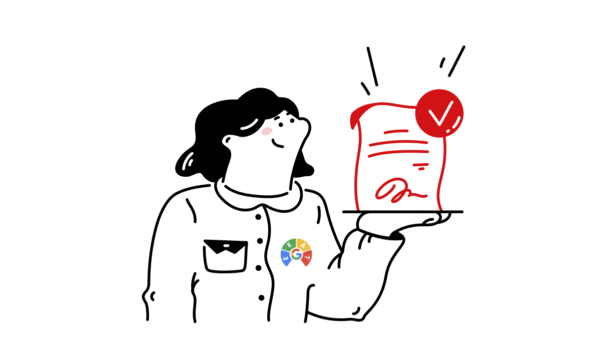Digital marketing and the complete guide to online success
What is digital marketing and why it is important
Digital marketing is a core strategy for businesses looking to reach and engage customers online. In this guide, you will learn what digital marketing is, why it is essential, and how to apply it effectively.
Digital marketing covers all marketing activities through digital channels: from search engine optimization to social media marketing and e mail marketing. This umbrella term covers both free and paid advertising that reaches your target audience where they are active: online.
In this complete guide, we cover:
- Core concepts and definitions of digital marketing activities
- Step-by-step process for implementing a digital marketing strategy
- Different channels and their specific benefits
- Practical tools and measurable results
- Frequently asked questions from digital marketers
Whether you are a small business or belong to mid-sized companies, this guide will help you navigate the digital world and achieve desired results.
Understanding digital marketing with core concepts and definitions
Basic definitions of digital marketing and e mail marketing
Digital marketing consists of all marketing activities that use digital channels to promote products and services. It differs from traditional marketing in its interactivity, measurability and ability for real-time optimization.
Digital marketing encompasses a wide range of techniques and platforms, including search engine optimization (SEO), social media marketing, e mail marketing, content marketing, paid advertising such as Google Ads, and marketing automation. SEO modifications ensure that your website meets the requirements of search engines such as Google. Google places high value on the structure of your website in SEO. By combining these different channels and tools, businesses can target their audience and optimize their marketing efforts.
An important aspect of digital marketing is that it is instantly measurable. By using digital marketing tools, marketers can see exactly which campaigns are successful, which channels generate the most traffic and how visitors behave on the website. This makes it possible to make quick adjustments and increase ROI (return on investment). Marketing automation is used to automate repetitive tasks, giving digital marketers more time for strategic tasks.
E mail marketing plays a crucial role here, as it allows companies to personally engage existing customers and prospects with relevant content and offers. In 2018, 74% of marketers used email when communicating with customers and prospects, and this percentage increased to 82% by 2020. Email marketing is one of the most effective strategies for digital marketing. Segmentation and automation allow emails to be tailored to the recipient’s needs and behavior, significantly increasing effectiveness.
In addition, digital marketing is dynamic and constantly evolving. New platforms, technologies and consumer behavior change regularly, making it necessary to be flexible and constantly adapt the strategy. Brands need to adapt their social media strategy to consumer preferences. It is important to know which social media platforms are most used by your target audience. Tracking trends and analyzing data are therefore indispensable components of a successful digital marketing strategy.
This combination of precision, measurability and flexibility greatly differentiates digital marketing from traditional marketing methods, offering businesses unprecedented opportunities to grow their brand and increase sales.
Key terms used by digital marketers:
- Search engine optimization (SEO): search engine optimization to improve online findability without advertising. SEO is effective and essential for all organizations, including small local businesses, Internet companies and corporations. Usability and the right keywords are constant important factors for SEO. SEO audit and keyword research are crucial parts of this process, along with link building and SEO copywriting to optimize content for search engines.
- Search engine marketing (SEM): Paid advertising in search engines for direct reach, including Google Ads and Display advertising. With Google Ads, you advertise on keywords and get a position at the top of search results, but you pay for this. Programmatic advertising and retargeting are advanced techniques within SEM for better targeting and conversion.
- Content marketing: Creating relevant content such as blogs, ebooks, videos, podcasts and branded content to attract potential customers. Content strategy and content creation are essential here, as well as storytelling, creative social media post design, short form video and animation video making.
- E mail marketing: Personalized messages to current customers and prospects, often supported by marketing automation and AI-powered lead scoring. Segmentation, automation and conversion tracking increase the effectiveness of e mail campaigns.
- Social media marketing: Organic and paid content through social media channels such as Meta Ads, LinkedIn campaigns, YouTube advertising and paid social strategy. UGC campaigns and influencer marketing enhance brand activation and employer branding.
- Marketing automation: Automated campaigns based on consumer behavior, with integrations such as chatbot development, AI copywriting tools and automation and AI integration for optimal customer interaction.
In addition, brand-related terms play an important role in digital marketing. These include brand positioning, proposition development, brand proposition and branding processes that support brand strategy and brand development. Elements such as brand identity, corporate identity, brand design, visual identity, tone of voice (development) and storytelling form the basis for a strong brand story. Working methods such as positioning workshops, go to market strategies and differentiation strategies help companies stand out in the marketplace.
UX and UI design, including mobile first design, accessibility UX and inclusive UX, ensure an optimal user experience. Behavioral design, user flow optimization, wireframes and prototyping are key steps in conversion-oriented design and landing page optimization. Design systems and design thinking support a creative and effective content strategy.
For a deep understanding of the target audience, audience research, competitive analysis, buyer persona development, ICP analysis and account-based marketing are important. Customer journey mapping, customer journey development by ICP and persona mapping help create targeted activation strategies and retention profiles.
Digital marketing also includes tools and techniques for web analytics such as conversion tracking, heatmaps & scrollmaps, funnel analysis, KPI mapping, ROI/SROI/ROAS calculations, A/B testing, dashboarding and visualization, Tag Manager integration and conversion optimization (CRO). Attribution modeling and data storytelling provide insightful reporting.
Web development and application development, including front-end/back-end realization, custom CMS, API links, hosting and maintenance, custom tools, AI integrations and no-code/low-code solutions, are technical foundations for successful digital marketing. E-commerce strategies such as Shopify optimization, conversion-oriented e-commerce design, product page optimization, funnel retention and checkout optimization play a major role in online sales.
Trends such as AI marketing, voice search optimization, creative AI, digital transformation, sustainability marketing, inclusive branding, Web3 & ownership economy and ethics in algorithms are influencing the future of digital marketing.
Marketing planning, performance marketing, experiential marketing, growth marketing and full-funnel approach are strategic pillars for growth. Activation marketing, local marketing, healthcare marketing and recruitment marketing are specific applications within digital marketing.
Finally, it is important to develop a sound digital marketing strategy that aligns with the business model canvas, product-market-fit, ansoff product-market growth matrix and strategic guidance for scale-ups. With a full system marketing approach, including marketing audits, innovation workshops and positioning advice, you set a sustainable course toward success.
Concept relationships within a good digital marketing strategy
Digital marketing channels do not work in isolation but reinforce each other within the customer journey:
- SEO → generates organic traffic → Content marketing → builds trust → E mail marketing → provides lead nurturing → Conversion optimization
- Social media → increases brand awareness → Influencer marketing → builds authority → increases traffic to website
- Search engine advertising → captures immediate intent → marketing automation → provides follow-up → increases conversions
Content should be relevant and tailored to the stage in the customer journey in which the target audience is.
This integrated approach ensures that each step in the customer journey is seamlessly connected and reinforced by the next tactic. For example, by first attracting organic traffic through SEO, you create a solid base of visitors who are further engaged through content marketing. Then, e mail marketing helps nurture these interested parties and ultimately convert them into actual customers with conversion optimization.
Moreover, combining social media and influencer marketing allows you to reach a broader and more specific target audience, which increases brand awareness and trust. At the same time, search engine advertising allows you to respond directly to the buying intent of potential customers, while marketing automation ensures efficient follow-up of leads and a higher conversion rate.
Successfully deploying these channels requires proper planning and alignment within the digital marketing strategy. By setting clear goals and using the right digital marketing tools, companies can maximize the effectiveness of their campaigns and achieve higher sales. This holistic model emphasizes the importance of collaboration between different digital marketing activities to achieve an optimal customer experience and measurable results.
This synergy between different channels creates a huge impact on both reach and results, if used together within a coherent digital marketing strategy.
Why digital marketing is essential for businesses
Digital marketing works because it allows companies to reach their targeted audience at the right time, with the right message, through the right channels.
Benefits of digital marketing supported by data:
- Cost effectiveness: Digital advertising generates 3x more leads on average than traditional marketing for 62% lower cost
- Measurability: Key performance indicators provide real-time insight into campaign performance versus delayed results from traditional methods
- Targeting precision: Reach potential customers based on demographics, interests and online behavior
- Greater reach: 24/7 online presence opens global markets for local businesses
- Flexibility: Ability to adjust campaigns instantly based on performance
- PPC benefits: With PPC, businesses pay only when users click on their ads, making cost management more transparent.
For mid-sized companies, this often means the ability to compete with larger players through smart use of digital marketing tools and a good strategy.

Key metrics and comparison of digital marketing activities
Channel | Average ROI | Time investment | Budget level | Best for |
|---|---|---|---|---|
SEO | 14.6% conversion | 6-12 months | €500-2000/month | Long-term traffic |
Google Ads | €2-8 per click | Instant results | €1000-5000/month | Direct leads |
Social media marketing | 4.2x ROI | 3-6 months | €300-1500/month | Brand awareness |
E mail marketing | 4200% ROI | 2-4 weeks setup | €50-500/month | Customer Retention |
Content marketing | 3x more leads | 4-8 months | €800-3000/month | Inbound marketing |
These metrics help you choose the right channels for your specific goals and budget.
Step-by-step guide to digital marketing implementation
Step 1: Establish target audience and goals
Before getting started with digital marketing activities, you need to set clear goals and understand your target audience.
Preparation activities:
- Create buyer personas based on demographics and online behavior
- Set SMART goals: Specific, Measurable, Acceptable, Realistic, Time-bound. Defining SMART goals is essential for effective marketing strategies.
- Determine budget allocation across channels
- Analyze where your target audience is active online
Example scenario:
- B2B company: Focus on LinkedIn, e mail marketing and search engine optimization for long-term lead generation
- E-commerce: Priority on Google Ads, social media channels and conversion optimization for direct sales
Market research checklist:
- Competitive analysis of digital presence
- Identification of content gaps in your industry
- Determination of seasonality and timing factors
- Research the online behavior of your target audience and competitors to create unique positioning
Step 2: Select and deploy digital marketing tools and appropriate channels
Select channels based on where your target audience is active and which ones best fit your goals.
Channel selection strategies:
- SEO (6-12 months): Long-term investment in online findability and organic traffic
- Google Ads (instant results): Immediate visibility for commercial search terms and potential customers who are ready-to-buy
- Social media (3-6 months): Brand awareness and community building through various media channels
Recommended digital marketing tools:
- Google Analytics for website tracking and conversion optimization. With Google Analytics, you gather useful insights into your website and data is collected in a clear overview.
- Google Ads for search engine advertising
- Hootsuite or Buffer for social media marketing management
- Mailchimp or HubSpot for e mail marketing and marketing automation
Start with 1-2 channels to maintain focus and build expertise before expanding to new platforms.
Step 3: Measure and optimize digital marketing activities
Successful digital marketing requires continuous monitoring and optimization of campaigns.
Key key performance indicators:
- Website traffic and sources (organic, paid, social)
- Conversion rates by channel
- Cost per lead and customer acquisition cost
- E mail open rates (20-25% benchmark) and click-through rates
- Social media engagement rates and reach
Optimization strategies:
- A/B test different ad versions, subject lines and landing pages
- Use heatmaps to analyze user behavior on website
- Implement remarketing for visitors who did not convert
- Optimize for mobile given 60%+ of traffic is mobile
- With marketing automation, companies can respond more quickly to changes in the market by more easily adapting their strategies
Measure your results monthly and adjust your marketing strategy based on what’s working and what’s not.
Avoiding common mistakes in digital advertising and e mail marketing
Learn from these common mistakes that can undermine the effectiveness of digital marketing efforts:
Mistake 1: Deploy all channels at once without focus Start with 1-2 channels and manage them before you expand. Spread leads to average results on all fronts rather than excellence on a few.
Mistake 2: Not setting clear goals
Use SMART criteria for each campaign. “More traffic” is not a goal – “20% more organic traffic in Q2” is.
Mistake 3: Expect results too quickly SEO takes 6+ months for significant results, social media marketing 3+ months for noticeable impact. Plan for the long term.
Pro tip: Start small, measure everything accurately, and scale only the tactics that are proven to work. This approach avoids wasting budget and time, and as a result, you’ll gain quicker insight into what does work effectively for your specific situation.

Case study of a digital marketing strategy and content marketing success
Case study: “Webshop X increased sales by 300% in 8 months through integrated digital marketing approach”
Starting situation
- Monthly turnover: €50,000
- Traffic: 90% organic, no paid ads
- Conversion rate: 1.2%
- No e mail marketing or social media presence
Implementation steps
Month 1-2: Basic optimization
- SEO optimization of product pages and technical improvements
- Google Analytics and conversion tracking setup
- Start content marketing with weekly blogs
Month 3-4: Expanding digital channels
- Launch of Google Ads campaigns for high-intent keywords
- Setting up e mail marketing for abandoned cart recovery
- Social media marketing starts on Instagram and Facebook
Month 5-8: Optimization and automation.
- Marketing automation for lead nurturing implementation
- Influencer marketing partnerships in relevant niches
- Conversion optimization through A/B testing of landing pages
Final results
Metric | For | After | Improvement |
|---|---|---|---|
Monthly sales | €50.000 | €200.000 | +300% |
Website traffic | 10.000 | 45.000 | +350% |
Conversion rate | 1.2% | 3.8% | +217% |
E mail list | 0 | 8.500 | New channel |
ROI digital marketing | – | 400% | – |
These results show the enormous impact of a systematic approach where different channels reinforce each other within the customer journey.
Frequently asked questions about digital marketing and e mail marketing
How much budget do I need for digital marketing?
Start with 5-10% of your revenue for digital marketing activities. Small businesses can start from €500-1000 per month for basic SEO and Google Ads. Focus first on 1-2 channels that best match your target audience.
How long does it take before I see results?
Google Ads shows immediate results within days, SEO takes 3-6 months for noticeable improvement in online findability, social media marketing takes 2-4 months for significant impact on brand awareness and leads.
Can I do digital marketing myself or do I need an online marketing agency?
Small businesses can start with basic tools and online training for simple campaigns. For more complex strategies such as marketing automation and extensive inbound marketing, expertise from the best online marketing agency or specialized digital marketers is recommended.
Which channel gives the best ROI?
E mail marketing delivers on average 4200% ROI, and SEO has high conversion rates (14.6%), but this depends heavily on your industry and target audience. B2B companies often see better results with content marketing and LinkedIn, while e-commerce benefits more from Google Ads and social media.
How do I measure the success of my digital marketing efforts?
Use key performance indicators such as website traffic, conversion rates, cost per lead, and final revenue increases. Google Analytics provides insight into which channels generate the most valuable visitors, while specific platform analytics delve deeper into campaign performance.
Conclusion with tips for a good strategy in digital marketing
The 5 key principles for successful digital advertising:
- Start focused: Start with 1-2 channels that best fit your target audience and budget
- Measure everything: Use digital marketing tools to accurately track every campaign and channel
- Optimize continuously: Digital marketing is not a set-it-and-forget-it strategy but requires constant improvement
- Think long-term: Combine quick wins (Google Ads) with long-term investments (SEO, content marketing)
- Invest in the right tools: Good analytics and automation are essential for scalable results
Digital marketing is not a one-time action but a continuous process of testing, learning and improvement. Its benefits — from precision targeting to real-time optimization — make it indispensable for companies looking to grow in new developments of the digital world.
Next steps:
- Start with a free Google Analytics setup for your website
- Download a digital marketing checklist to evaluate your current activities
- Consider partnering with digital marketers for strategic support on more complex campaigns
With the right approach and tools, digital marketing can deliver transformative results for businesses of all sizes. The key lies in systematic implementation, accurate measurement, and a willingness to learn and adapt based on what works for your specific situation.







